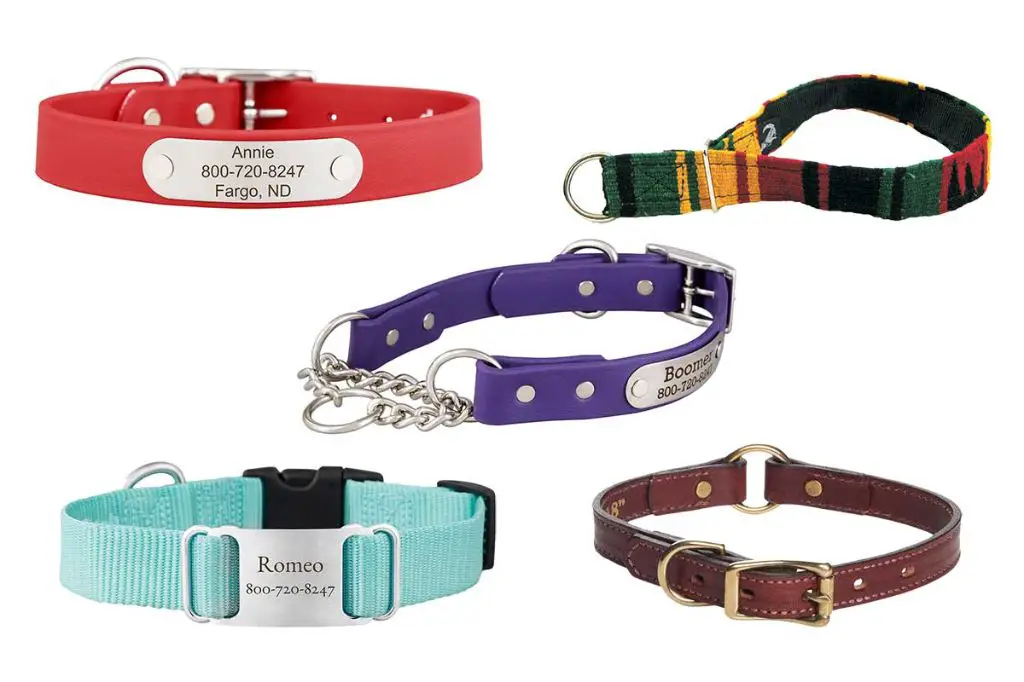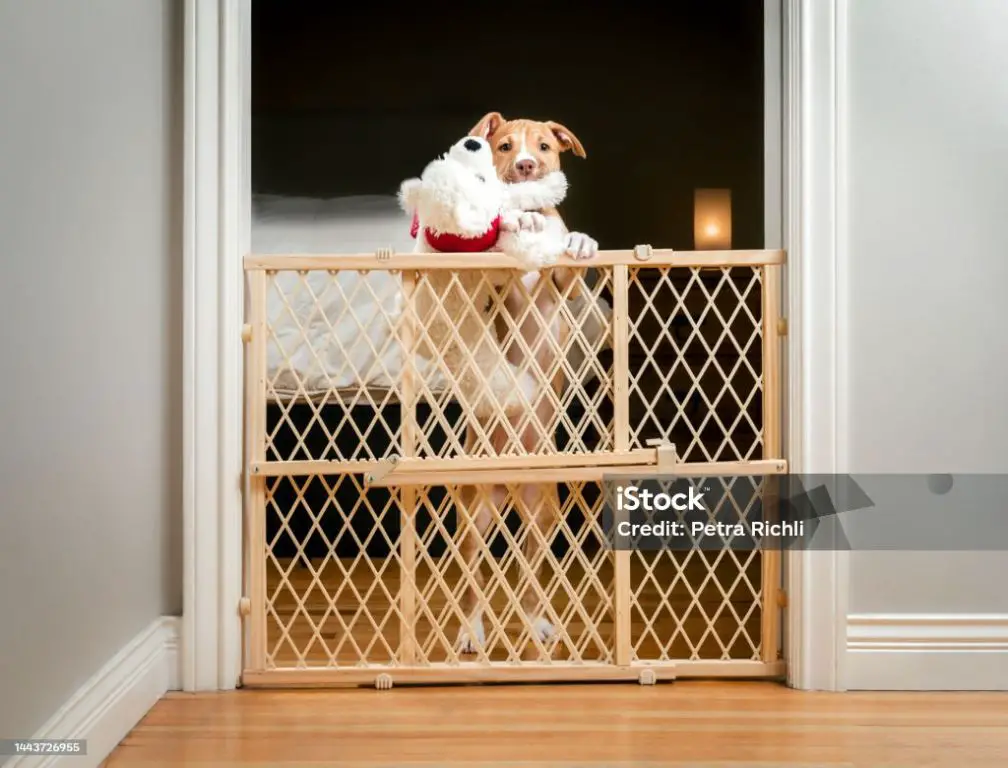Should Dogs Wear Collars at Home?
Having your dog wear a collar at home is a topic that stirs debate among dog owners. While some see collars as a potential safety hazard, others view them as a critical form of identification. This article will examine the pros and cons of having dogs wear collars at home and provide tips for keeping your pup safe and secure.
Pros of Collars at Home
Wearing a collar at home provides an easy way to display your dog’s identification tags. These tags typically include your name, address, and phone number so your dog can be returned if they ever escape from your home or yard. Without a collar and tags, a loose dog will have no way to be identified or reunited with their owner.
It’s recommended all dogs wear a collar with ID tags any time they are not contained in a fenced area or home. Accidents can happen, doors or gates may be accidentally left open, so having tags ensures your dog won’t end up lost or at an animal shelter if they ever find themselves outside your property. The tags don’t need to be large or obtrusive for indoor use, but they should be durable and securely fastened.
Cons of Collars at Home

It is important to consider the potential risks of your dog wearing a collar at home when deciding whether or not it is necessary. One of the main downsides is the possibility of the collar getting caught on something and causing injury.
For example, the collar could get hooked onto a door handle, cabinet knob, fence, or another object in the house or yard. If your dog then tries to pull away while caught, this can put dangerous pressure on their neck. Large and heavy collars may also place extra strain on the neck when caught.
The other end of the leash attached to the collar can also get tangled around furniture or your dog’s legs. Some dogs may panic when they feel caught, making injuries more likely as they jerk and pull trying to get free.
Even breakaway cat collars designed to release under pressure can still cause injury before releasing. And dogs have been known to get a paw or leg stuck through the collar when trying to remove it.
Confining your dog in a crate or safe area when you are not home is an effective way to prevent the risk of getting caught on something while wearing a collar indoors.
When a Collar May Be Necessary
While most dogs don’t need to wear a collar at home, there are some situations where having your dog wear a collar indoors makes sense:
Newly Adopted Dogs: When you first adopt a dog, having them wear a collar with your contact information can be wise in case they get loose or lost in the initial adjustment period. Slipping out doors or windows is common for dogs in a new home as they get acclimated.
Dogs Prone to Bolting: If your dog has a history of slipping out doors or is an escape artist, having them wear a collar ensures you can identify them and contact you if they do manage to bolt out the door. High energy, anxious, or easily excitable dogs may be more likely to make a run for it if they see an open door.
In these situations, use a limited-slip or safety collar to avoid the risks of a collar getting caught. And be sure to include your name, phone number, and address on an ID tag. A collar is a safeguard in case your dog slips out, not an excuse to let them roam unsupervised.
Types of Collars
There are various types of collars that may be suitable for dogs at home.
Breakaway Collars

Breakaway collars contain a safety mechanism that allows the collar to detach or “breakaway” if the collar gets caught on something. This helps prevent potential choking or injury hazards if the collar gets snagged. Breakaway collars are a good lightweight option for everyday wear.
Martingale Collars
Martingale collars are made of a loop of material that tightens slightly when tension is applied, but cannot constrict any tighter than a preset circumference. This makes them a good option for training dogs that may try to slip out of traditional collars while walking on-leash. They can also be used as anti-pull collars.
Harnesses
Rather than placing pressure on a dog’s delicate neck and throat area, harnesses disperse pressure across the body for control and guidance while reducing strain on the trachea. They are often recommended for small and brachycephalic (short-nosed) breeds. Harnesses allow for increased maneuverability and range of motion.
Training Without a Collar
Many dog owners are moving towards positive reinforcement training techniques that do not involve the use of collars at all. Positive reinforcement training relies on giving your dog treats and praise when they demonstrate a desired behavior. This helps reinforce the behavior and motivates your dog to keep repeating it.
Clicker training is one popular form of positive reinforcement. You use the clicker to “mark” the exact moment your dog does what you want, then reward them with a treat. The clicker is a clear signal so your dog learns more quickly. This allows you to shape more complex behaviors by rewarding small steps towards the end goal.
Training without a collar requires patience, consistency and paying close attention to your dog’s needs. But it can be an excellent way to build a strong bond and help your dog happily obey commands without physical corrections. Always make sure training is a positive experience for both of you.
Creating a Safe Home
Containment, dog-proofing, and monitoring at home can reduce risks for dogs and contribute to a stress-free environment.
- For containment, consider installing baby gates or blocking off areas of your home with furniture to restrict access to places like kitchens, staircases, or open windows where dogs could hurt themselves.
- Dog-proof by removing household dangers like exposed wires, toxic houseplants, and dangerous small objects. Keep waste bins out of reach, and store human medications in secure cabinets.
- Monitor your dog especially when introducing them to a new room or area so you can correct unwanted behaviors. Limit unsupervised time, and avoid using tie-outs which can cause injuries.

Creating a safe home doesn’t always mean a dog needs to wear a collar there. But completing the above steps can help reduce risks and limit situations where a collar would be advised.
Microchipping
Microchipping your dog is a simple procedure that provides permanent identification. A veterinarian injects a grain-sized microchip under your dog’s skin, usually between the shoulder blades. This chip contains a unique number that can be scanned by shelters and veterinary offices to identify your dog if they become lost.
Microchips do not require batteries and last the lifetime of your dog. They allow your contact information to be associated with your dog in a database. Make sure to register your details and keep them updated if you move or change phone numbers. That way, you can be contacted if your lost dog turns up at a clinic or shelter.
While microchips do not replace the need for identification tags on collars, they provide an extra safeguard if your dog ever slips out of its collar. Even responsible pet owners can experience the heartbreak of losing a dog, and microchipping gives you the best chance of being reunited. For maximum protection, all dog owners should ensure their pets are microchipped.
When to Ask a Vet
There are certain situations where a vet should be consulted before making any decision about your dog wearing a collar at home. If you have any concerns about your dog’s safety or health, it’s always best to check with your veterinarian first.
Some specific examples of when to talk to your vet include:
- If your dog has a history of skin irritations or allergies, ask your vet if constantly wearing a collar could exacerbate these conditions.
- If your dog has ever gotten caught on furniture or fixtures with a collar, discuss options to prevent this from reoccurring.
- If your dog has a medical condition that causes coughing or respiratory difficulties, wearing a collar could potentially worsen symptoms. Check with your vet on whether modifications or collar-free options are better.
- If your dog tends to chew or scratch at a collar frequently, this could signal a problem. Talk to your vet to rule out skin issues or other medical causes.
- Young puppies have delicate tracheas, so collars pose more risks. Get your vet’s advice on the best options for your pup.

Remember, your veterinarian knows your dog best and can provide personalized advice on whether wearing a collar at home is safe and appropriate. Don’t hesitate to ask questions – your dog’s health and safety should always come first.
Conclusion
In summary, whether or not dogs should wear collars at home depends on the individual dog, owner, and home environment. For many dogs, wearing a collar at home provides unnecessary discomfort and risks. However, some dogs benefit from wearing a collar for identification purposes or training aids. Types of collars like martingle collars and harnesses offer control while minimizing risks.
In general, it’s recommended to avoid leaving collars on dogs unsupervised at home. Use baby gates, pens, or doors to restrict your dog’s access if needed for safety rather than relying on collars alone. Consider microchipping your dog for permanent identification. Consult your vet for advice tailored to your specific dog and situation. Prioritize creating a safe home environment through proper training and management.
With thoughtful consideration for your dog’s needs, you can determine if and when a collar may be appropriate in your home. The most important thing is keeping your dog comfortable, safe, and secure.